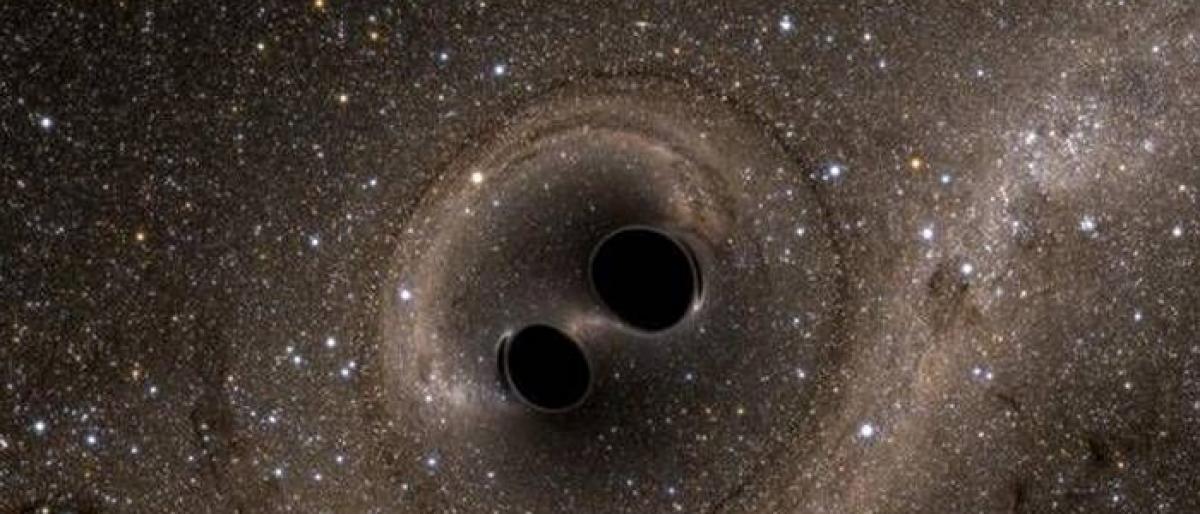Live
- TCS recruits 52 PB Siddhartha students
- Mcap plunges by Rs 2.19 L cr
- Kenya cancels airport, energy deals
- Plans underway for green ammonia plant in Kakinada
- TG may review MoUs with Adani
- Lokayukta conducts raids on Mines and Geology Officer
- Minister Durgesh urged not to impose entry fees on tourists at beaches
- Naxal Resettlement and Surrender Committee to visit Vikram Gowda encounter site
- 10 yrs of BRS ‘misrule’ Vs 10 mths of people’s govt
- Bid to revitalise industrial sector in East Godavari
Just In
Indian, US satellites find black hole that spins near maximum possible rates


Scientists using data from Indias first dedicated astronomy satellite, AstroSat, and NASAs Chandra Xray Observatory have found that a black hole in the binary star system 4U 163047 spins close to the maximum possible rate Relatively smaller black holes are exotic end states of massive stellar cores, said astronomers led by the Tata Institute of Fundamental Research TIFR in Mumbai The gravi
Scientists using data from India's first dedicated astronomy satellite, AstroSat, and NASA's Chandra X-ray Observatory have found that a black hole in the binary star system 4U 1630-47 spins close to the maximum possible rate. Relatively smaller black holes are exotic end states of massive stellar cores, said astronomers led by the Tata Institute of Fundamental Research (TIFR) in Mumbai. The gravity of such a collapsing core is so strong that its entire mass is crushed into a point, according to the research accepted for publication in The Astrophysical Journal.
This point, however, cannot be directly seen, because nothing, not even light, can escape from a region around it, thus justifying the name of the object. Surprisingly, astronomical black holes are the simplest known objects in the universe, because they can be fully characterised by only two properties, mass and spin rate. Therefore, measurements of these two properties are uniquely important to probe some extreme aspects of the universe, and the fundamental physics related to them, researchers said.
"The scientific measurement of the spin rate of the black hole, an extremely exotic but the simplest object of the universe, comes out to be close to the maximum possible value," Sudip Bhattacharyya, Associate Professor at TIFR told PTI. "This is generally very important to probe some extreme aspects of the universe, and the fundamental physics (for example, the theory of gravitation) related to them," said Bhattacharyya, who is the Principal Investigator of the AstroSat Soft X-ray Telescope (SXT).
"Such measurements, especially of the spin rate, are very difficult to make, and can be done only by high-quality X-ray observations in the correct state of the binary stellar system, in which the black hole is gobbling matter from its companion star," said Mayukh Pahari, who started this work at TIFR, before joining the University of Southampton in the UK.
"The SXT and the Large Area X-ray Proportional Counter (LAXPC) aboard the first dedicated Indian astronomy satellite AstroSat played a key role to measure the black hole spin rate, which was consistent with results from our contemporaneous Chandra satellite data," Bhattacharyya added. "From this first joint AstroSat-Chandra study of a black hole, that may lead to further such cooperations, we have found that the black hole in 4U 1630-47 spins very rapidly, with a rate not much less than the maximum possible rate, which makes it even more exotic," added Professor A R Rao of TIFR.

© 2024 Hyderabad Media House Limited/The Hans India. All rights reserved. Powered by hocalwire.com






